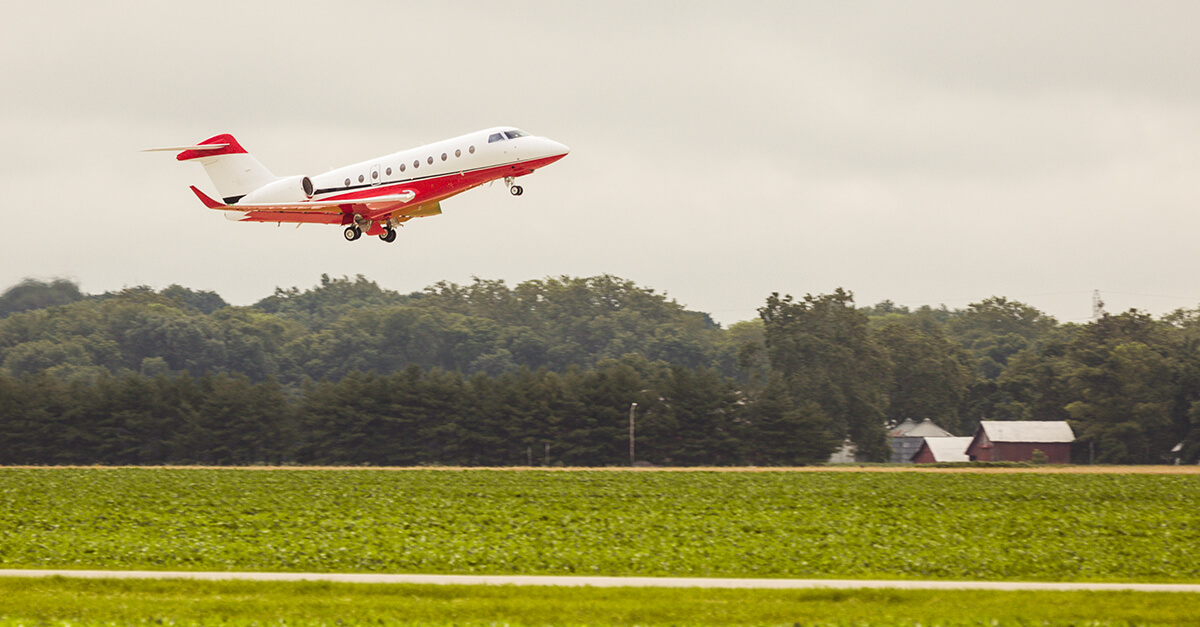
April 21, 2020
State aviation offices have a unique and broad view of the damaging impact of COVID-19 on the aviation industry, ranging from decreased flight training activity to eerily empty commercial airports and questions regarding future airport funding.
“Our industry is crippled,” declared Martin Blake, manager of the Office of Aviation at the Indiana Department of Transportation. “Aviation is the first to feel any slip in the world, whether pandemic, terrorist attack or financial crisis. But we also have to be the first ones to recover. We are the glue that holds the world together.”
Tim McClung, planning and outreach manager with the Iowa DOT’s Aviation Bureau, says airline passenger traffic is down about 95% in Iowa.
“Business aircraft continue to play a vital role in moving people and supplies, but it’s very limited and only as necessary,” said McClung.
Some flight instruction continues in Iowa, which does not have an official stay-at-home order. Maintenance activities are steady, but the overall decrease in flight activity is having a significant impact on fueling revenue and taxes that pay for important aviation programs.
Decreased flight activity results in less fuel tax revenue, a critical funding mechanism for a lot of state aviation departments. Many of these departments also receive money from state general fund appropriations.
In some cases, that money can be reverted to other uses by state officials, leaving state aeronautics offices wondering if funds will be available for aviation projects, or if those funds will be used for other purposes, especially in light of record unemployment, increased needs for personal protective equipment for first responders and other COVID-related funding needs.
State aviation officials are hopeful that the Coronavirus Aid, Relief, and Economic Security (CARES) Act will provide a lifeline to general aviation airports and small businesses needing emergency funding.
In what McClung called an “extremely proactive move,” the Iowa Economic Development Authority created a stopgap program to allow short-term funding to help small businesses until the CARES Act and other federal programs are fully implemented. The Iowa DOT’s Aviation Bureau Office has reached out to aviation companies to make sure they are aware of the availability of this relief funding.
State aviation officials say one of their main roles during this crisis has been to communicate with airports and aviation businesses in their states, as well as the flying public, and the officials often face tough questions. Another important role of state aviation officials is to make sure their congressional delegations and FAA officials understand how the pandemic is impacting their states.
State-issued stay-at-home or shelter-in-place executive orders vary from one state to another, and not all orders specifically address whether aviation, or what kinds of aviation, are considered “essential.” Are travel restrictions in place? Is flight instruction prohibited?
In most states, executive orders prohibiting non-essential activities means that flight schools are “taking a beating,” according to one state aviation official.
“Aviation as an industry is going to be hemorrhaging for a while,” said Blake. “We haven’t even begun to see the [long-term] impacts of this pandemic.”
But as Iowa’s McClung noted, “Aviation is vital to the economy. Airline activity, business aviation, flight instruction and other general aviation activity will be critical to economic recovery.”


 International Business Aviation Council Ltd.
International Business Aviation Council Ltd.